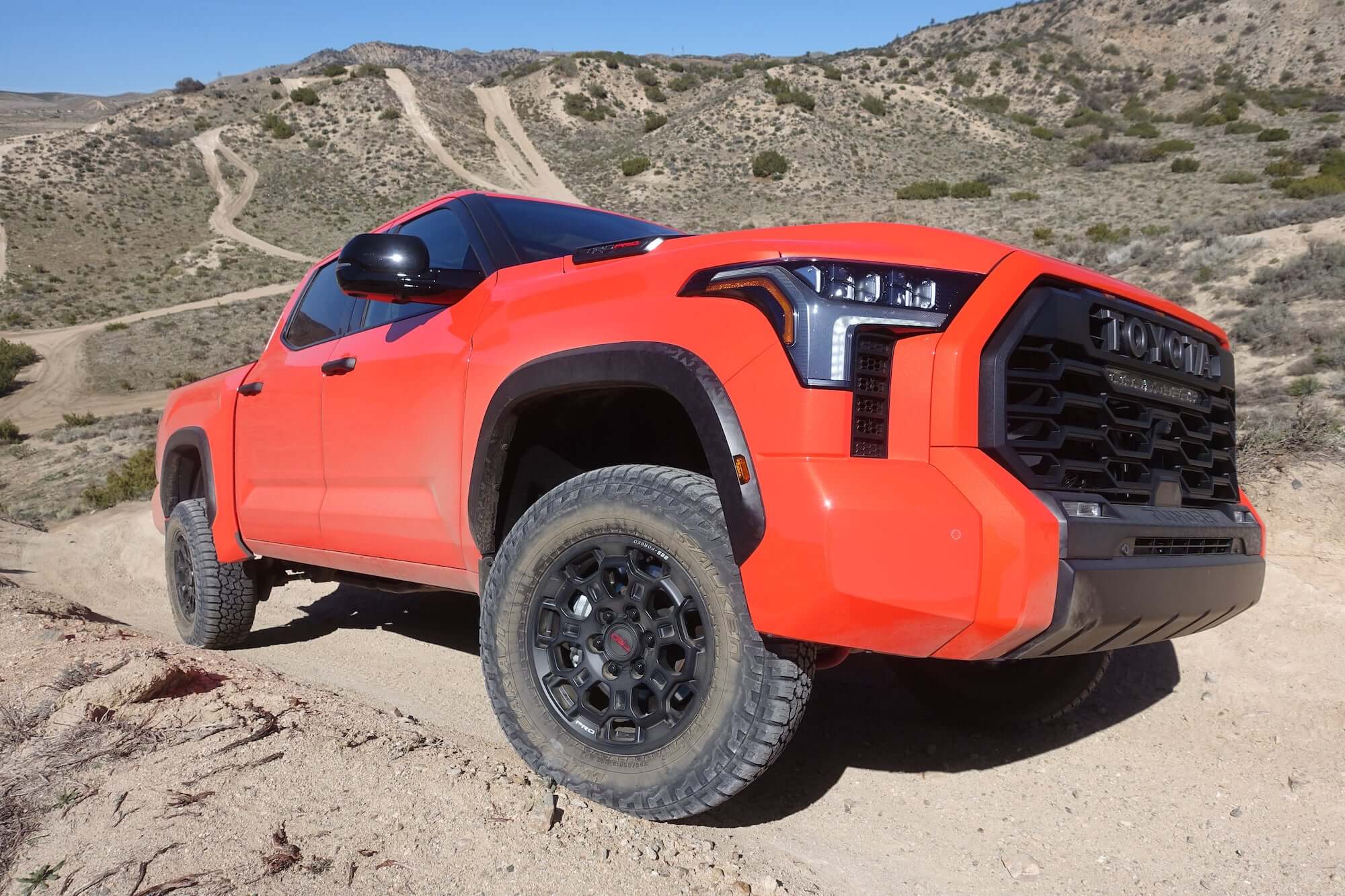
2022 Toyota Tundra TRD Pro—First Drive
Toyota has had its sights on the domestic full size pickups for decades. At first, it was a cautious approach. Remember the T-100? While it was a step in the right direction, the T-100 was more midsize than full size and used many components from the compact truck. Plus, it came with a V6 instead of a V8. So it was less appealing to buyers looking for full size metal.
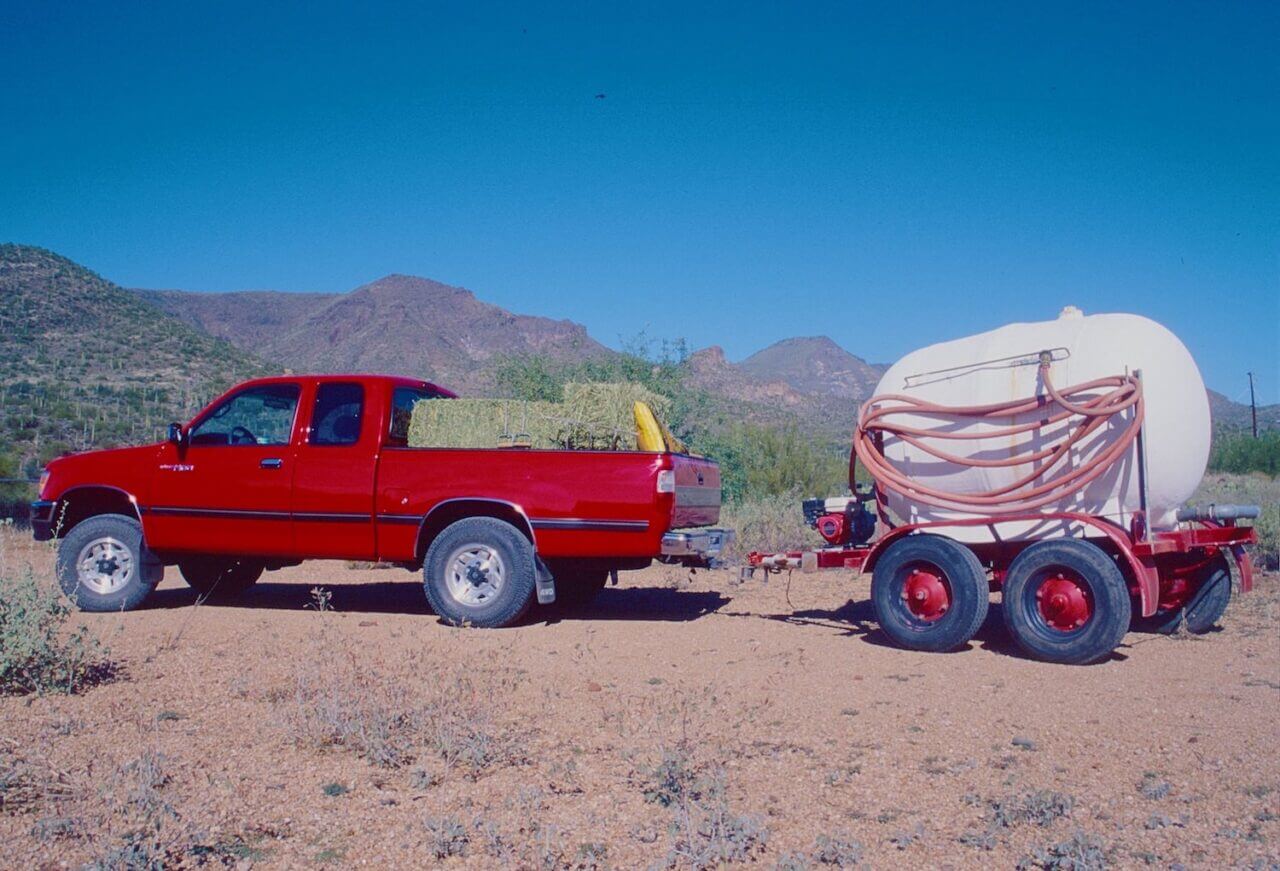
The first Tundra came in 2000. And although it had huskier styling, it was the same basic size as the old T-100. The new Tundra had one important upgrade to make the industry take note—an optional 4.7-liter V8 with 245 hp. Thanks to that V8, the new Tundra could tow more (7,200 lbs.) it was quicker and rode better thanks to the coil-springs replacing the T-100s torsion bars up front. And this generation of Tundra has proven to be incredibly robust and long lasting. Even though it was an excellent truck, it was still too small to compete with the American big boys.
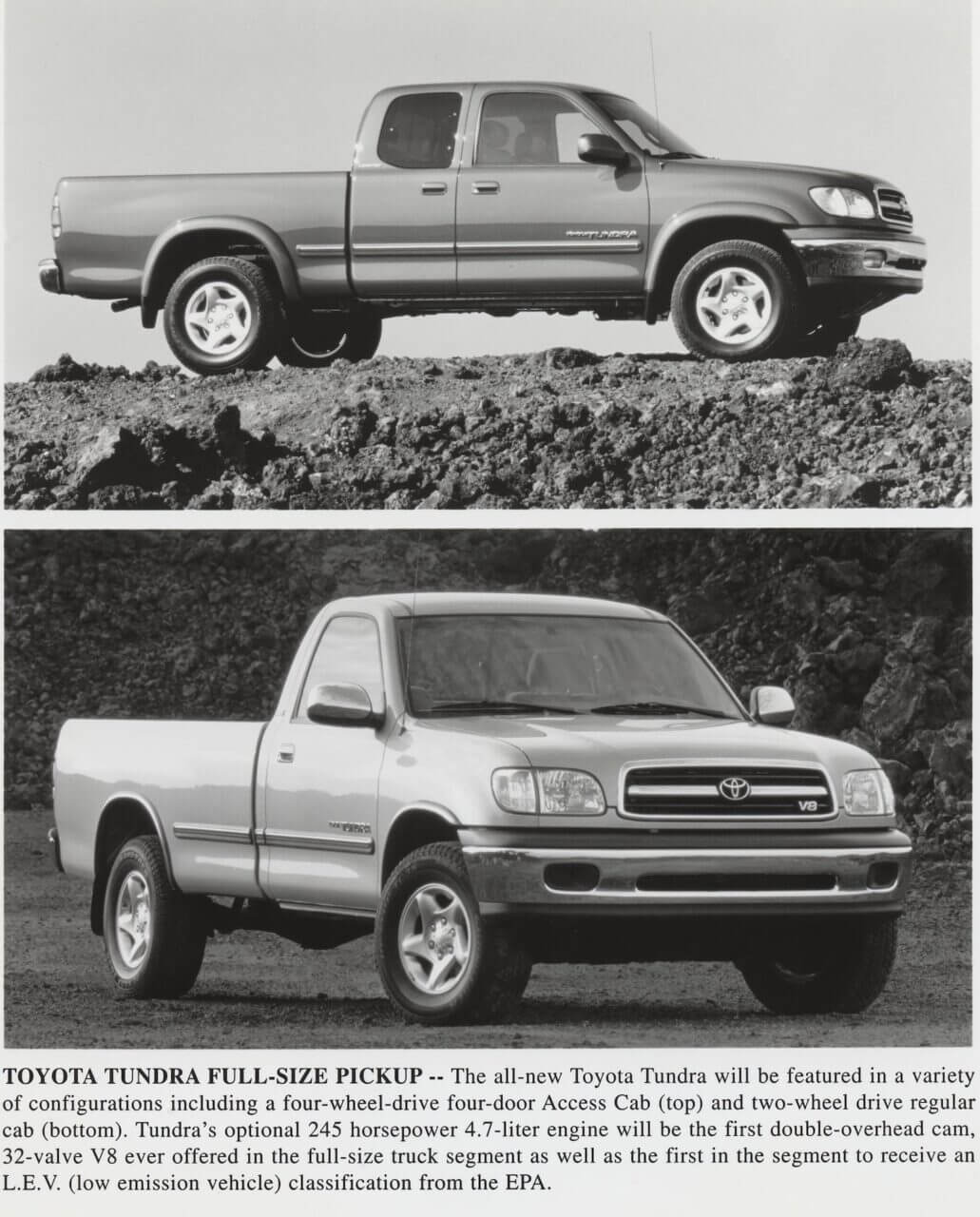
After years of having that small pickup complex, Toyota decided to get serious. So in 2007, an all-new Tundra launched. And it was super-sized. This was a massive truck that could stand shoulder-to-shoulder with any domestic. And with sales of over 200,000 that first year, it seemed like they had the right formula. This beefy American-made beast had a strong 5.7-liter V8, a massive 10.5-inch rear axle and the ability to out-tow everyone. It was a great truck and has had a loyal following amongst off-roaders. But after years without a significant update, the Tundra was getting a little tired.
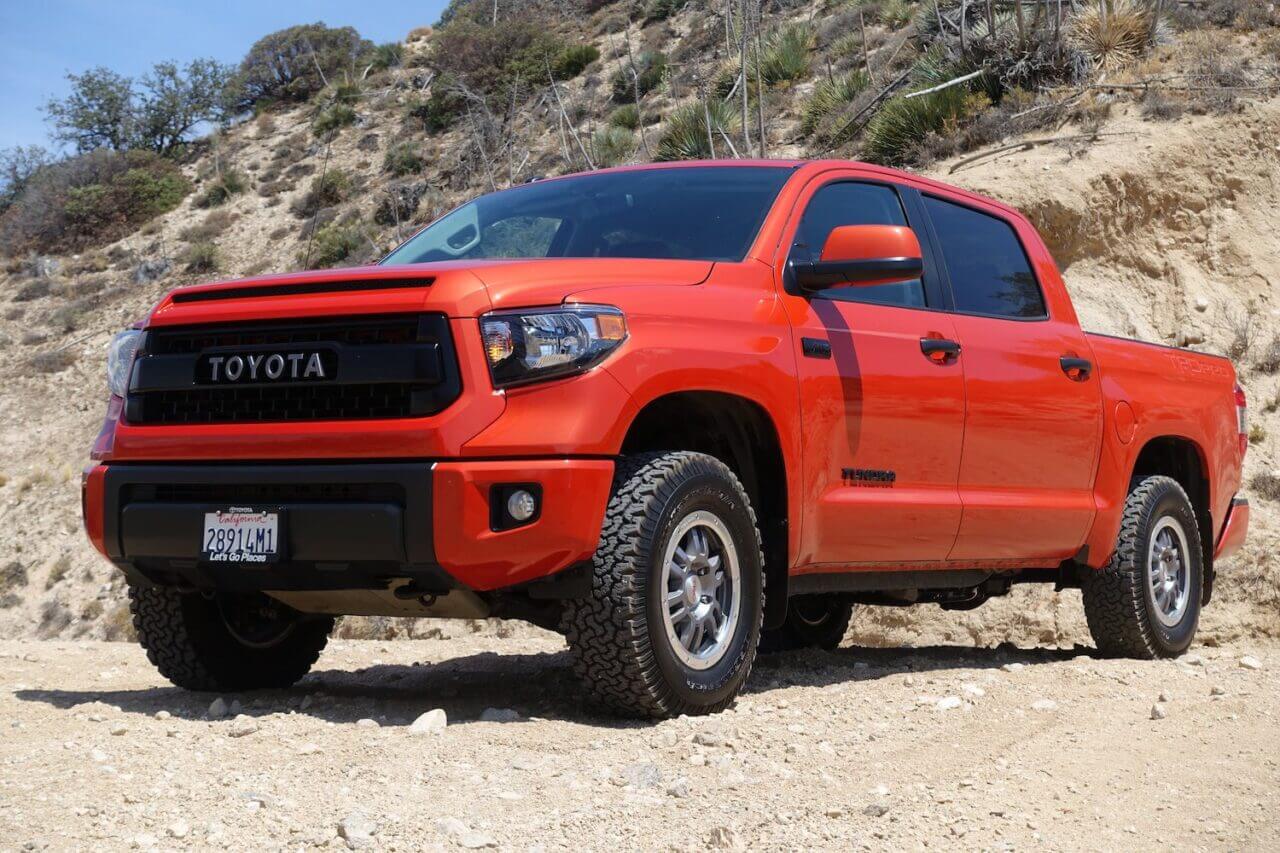
A TRD Pro model arrived in 2015 with a bit more dirt prowess but sadly without a locking rear differential, like the competition. Sales basically stalled at around 120,000 trucks per year. It was time for some fresh metal.
The 2022 Tundra is all-new from nose to tail and packs some interesting innovations too. The most off-road capable model is still the TRD Pro and this time, it’s got a locker. The Pro comes only as a V6 hybrid and only as a CrewMax with a 5.5-foot bed. So we borrowed a $68,925 TRD Pro drenched in Solar Octane for some testing on the trails at Hungry Valley SVRA in Gorman, CA as well as the streets and highways around LA. Let’s find out if it’s the right truck for you.
The Hardware
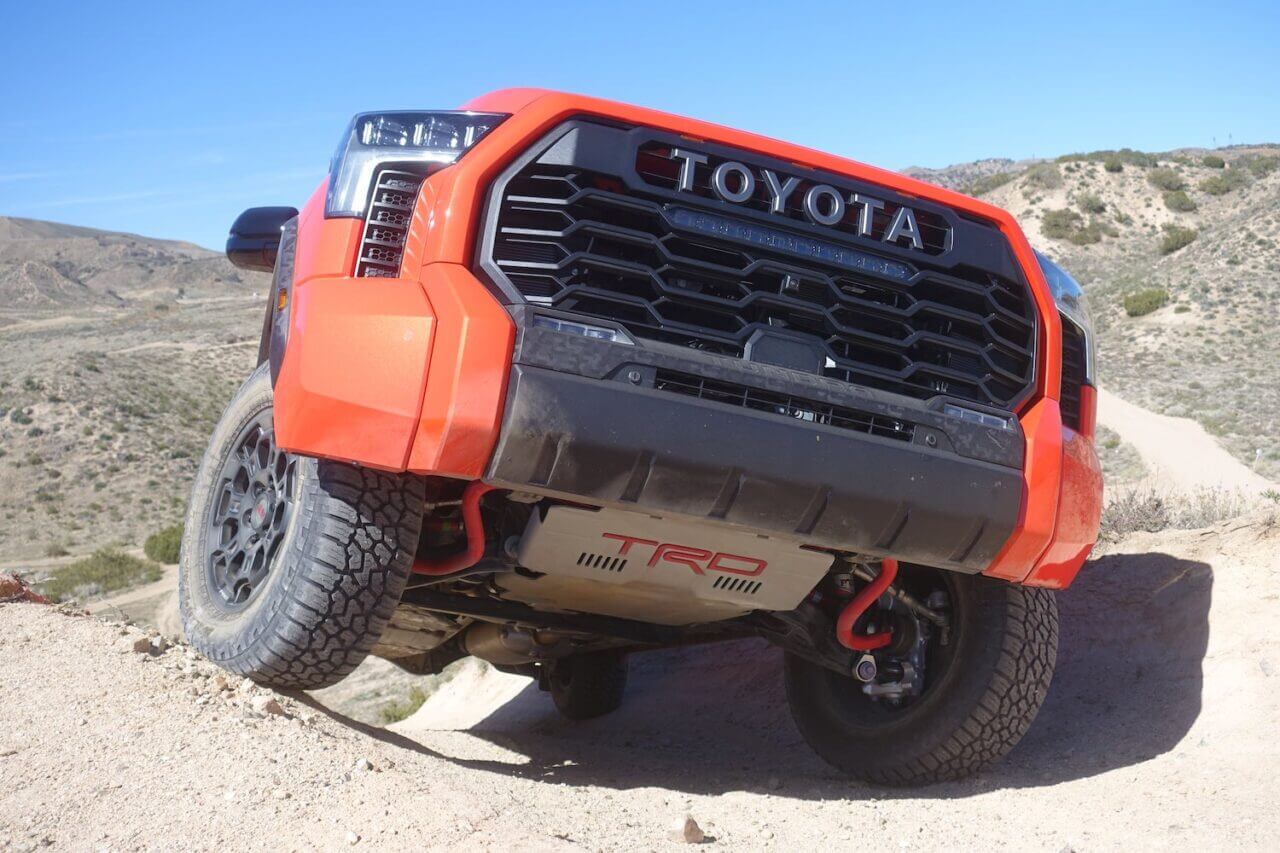
The Tundra rides on an all-new chassis. But this frame and suspension architecture isn’t just for pickups. The Tundra chassis uses Toyota’s innovatively named New Global Architecture-F (TNGA-F) and it’s a system of parts that is common to the new Toyota Sequoia and Land Cruiser (not available on our shores) SUVs as well as the Land Cruiser’s chic cousin, new Lexus LX 600. A modified version will reportedly underpin the new Tacoma, 4Runner and Lexus GX too. It seems likely that in the future, the commonalities of chassis parts between all these vehicles could make for easier swapping as well as the development of aftermarket parts. But time will tell.
The Tundra’s cab and bed are made from high-strength steel with the exception of the aluminum hood and front door panels. The cab is mated to the frame with hydraulic mounts to dissipate vibrations.
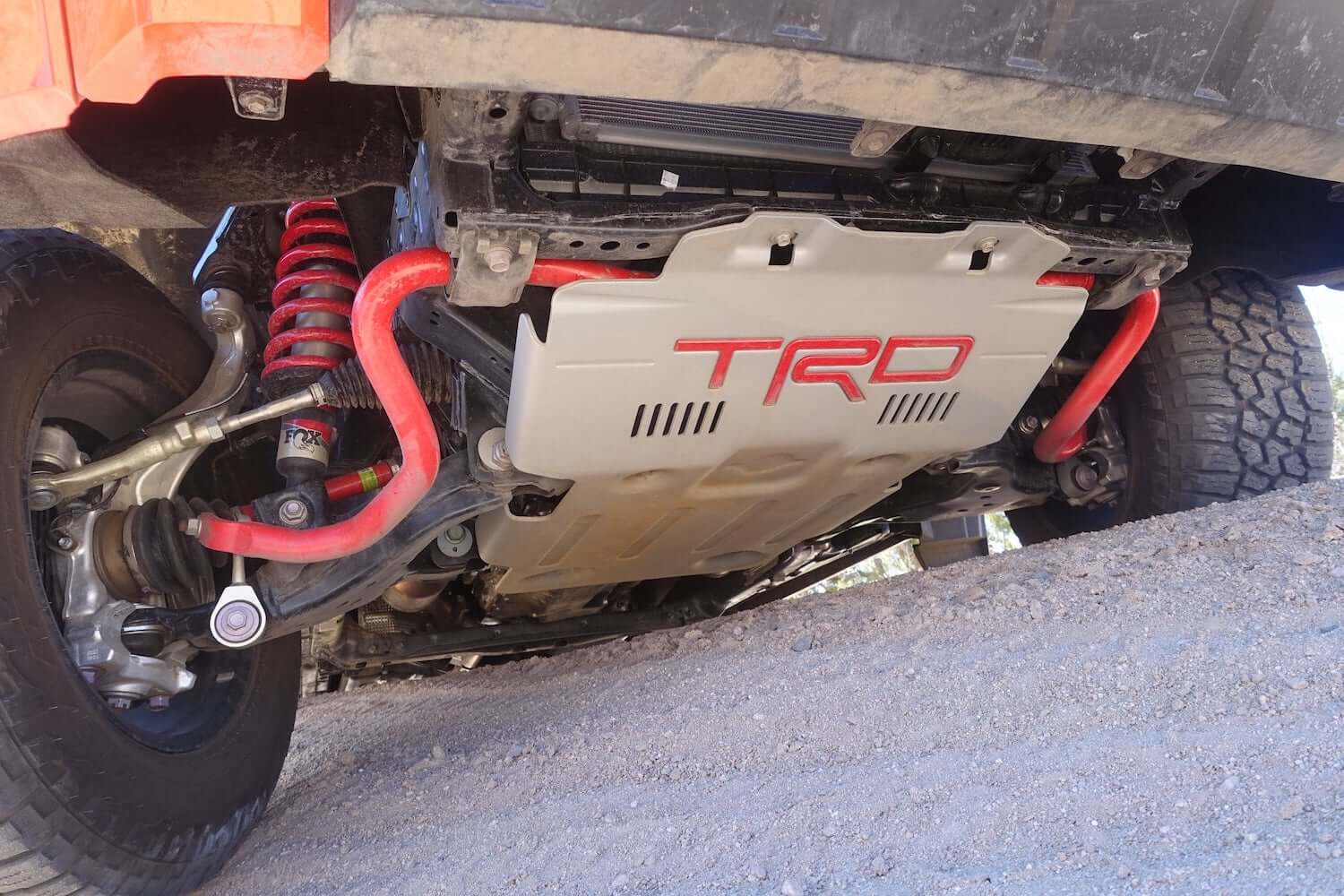
The Tundra’s new frame system uses a relatively conventional coil-spring independent double A-arm front suspension. And because this is the Pro, there’s a 1.1-inch lift over other Tundras with damping handled by 2.5-inch Fox internal bypass dampers and remote reservoirs. There’s also a beefy and very red TRD Pro front stabilizer bar. It’s all protected by a massive aluminum skid plate. Other manufacturers should really take notes from TRD when it comes to skid plates—these are excellent parts.
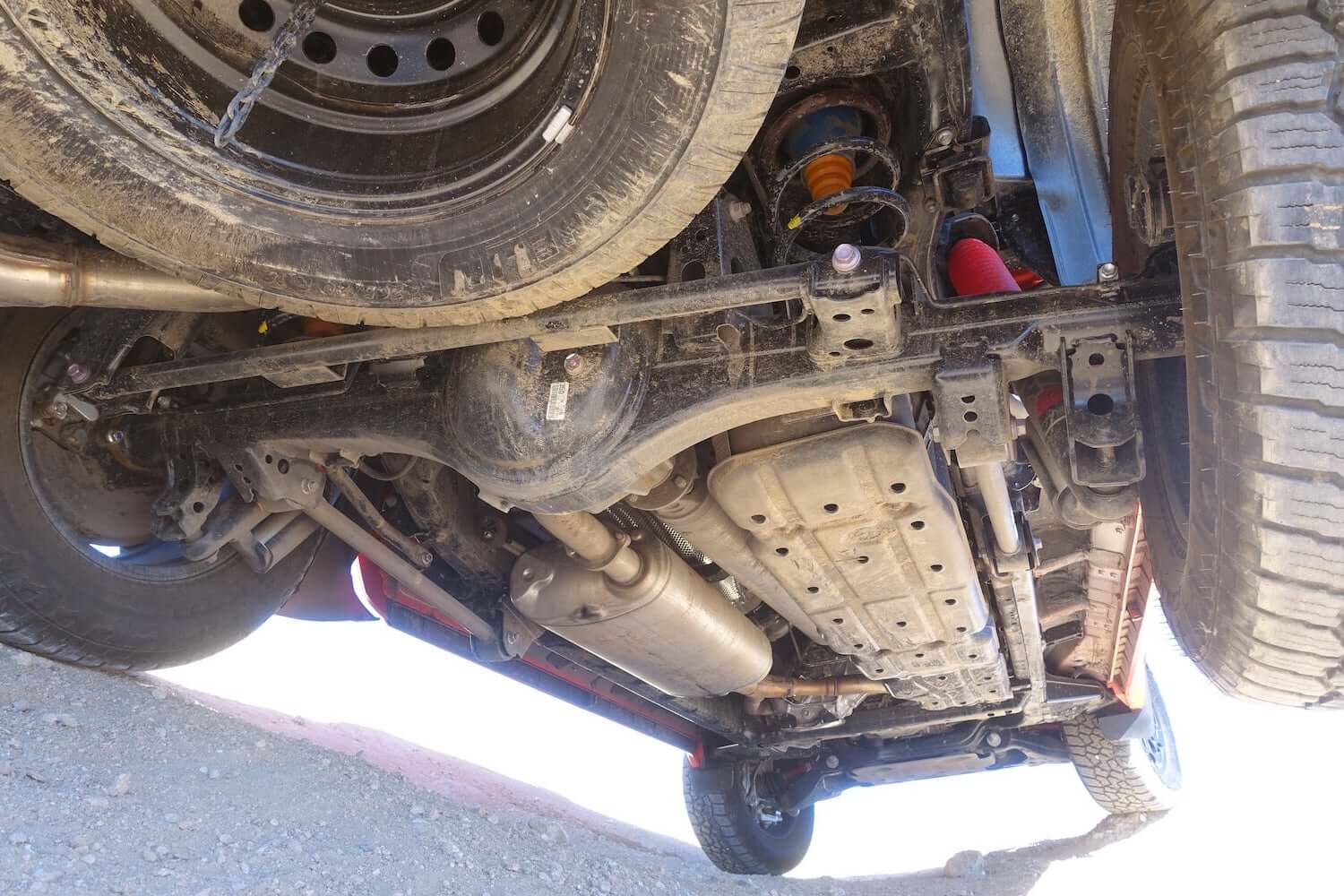
Out back, the Tundra ditches the old-school leaf springs for a multi link coil spring suspension. The TRD Pro model uses Fox dampers here too. But the biggest upgrade for Pro trucks is (finally) an electronic locking rear differential. That’s a cornerstone of any good off-road package, so we’re pleased it’s included. All Tundras carry a fairly modest 3.31:1 axle ratio.
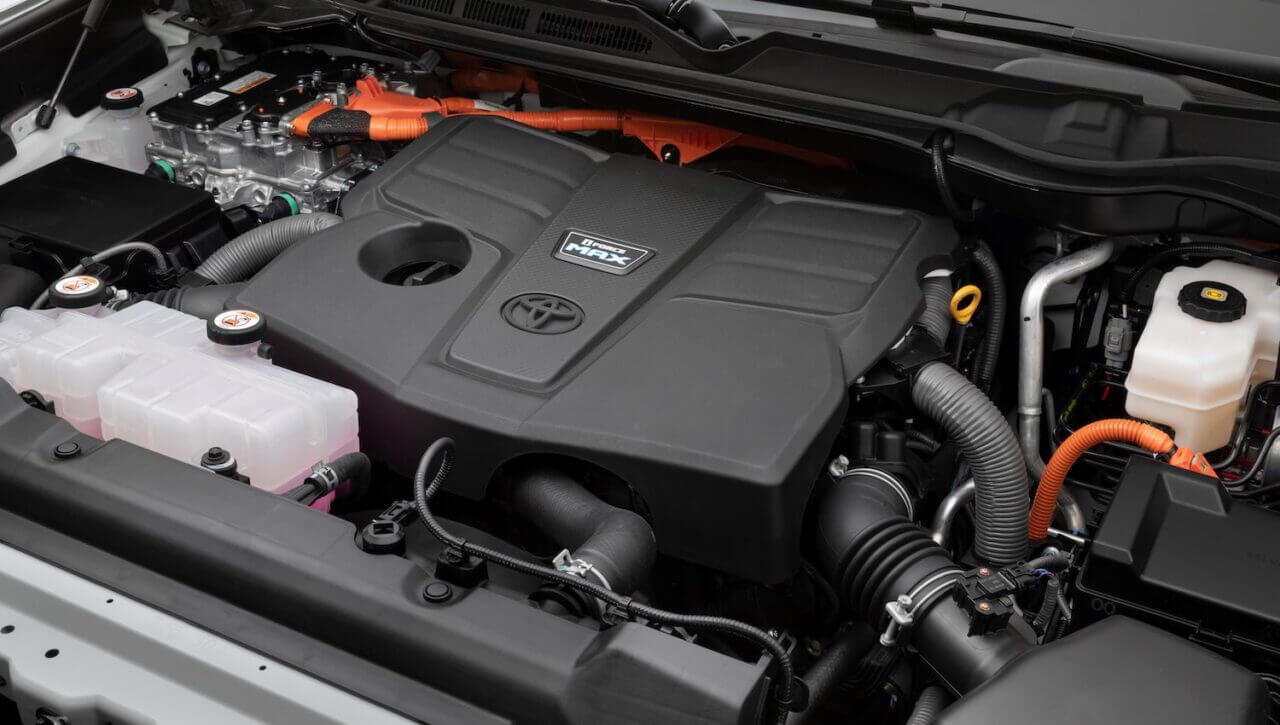
The Tundra’s old 5.7-liter V8 was an absolute gem of an engine. It always felt like it produced more power and torque than the numbers suggested. The big V8 developed 381 hp at 5,600 rpm and 401 lb-ft of torque at 3,600 rpm. But it was thirsty and mated to a six-speed automatic.
Well, V8s are history when it comes to the Tundra. But don’t fret. Most Tundras will use a 3.5-liter twin-turbo i-Force V6 with a solid 389 hp at 5,200 rpm and 479 lb-ft of torque at 2,400 rpm. And the TRD Pro model has this engine married to a battery-electric hybrid power pack—the i-Force Max. The 48 hp (184 lb-ft of torque) electric motor is sandwiched between the V6 and the new 10-speed transmission. And there’s a small 1.87 kWh Nickel-Metal Hydride battery pack mounted under the backseat. The result? The Max develops 437 hp at 5,200 rpm and a whopping 583 lb-ft of torque at 2,400 rpm. Those are better numbers than any gas engine in a half-ton with the exception of the Raptor and TRX.
The hybrid V6 and ten-speed automatic powertrain are mated to a two-speed transfer case with a 2.64:1 low range—the same gearing as the last Tundra. So, the crawl ratio for this big guy is 43:1, thanks to a deep 4.92:1 First gear.
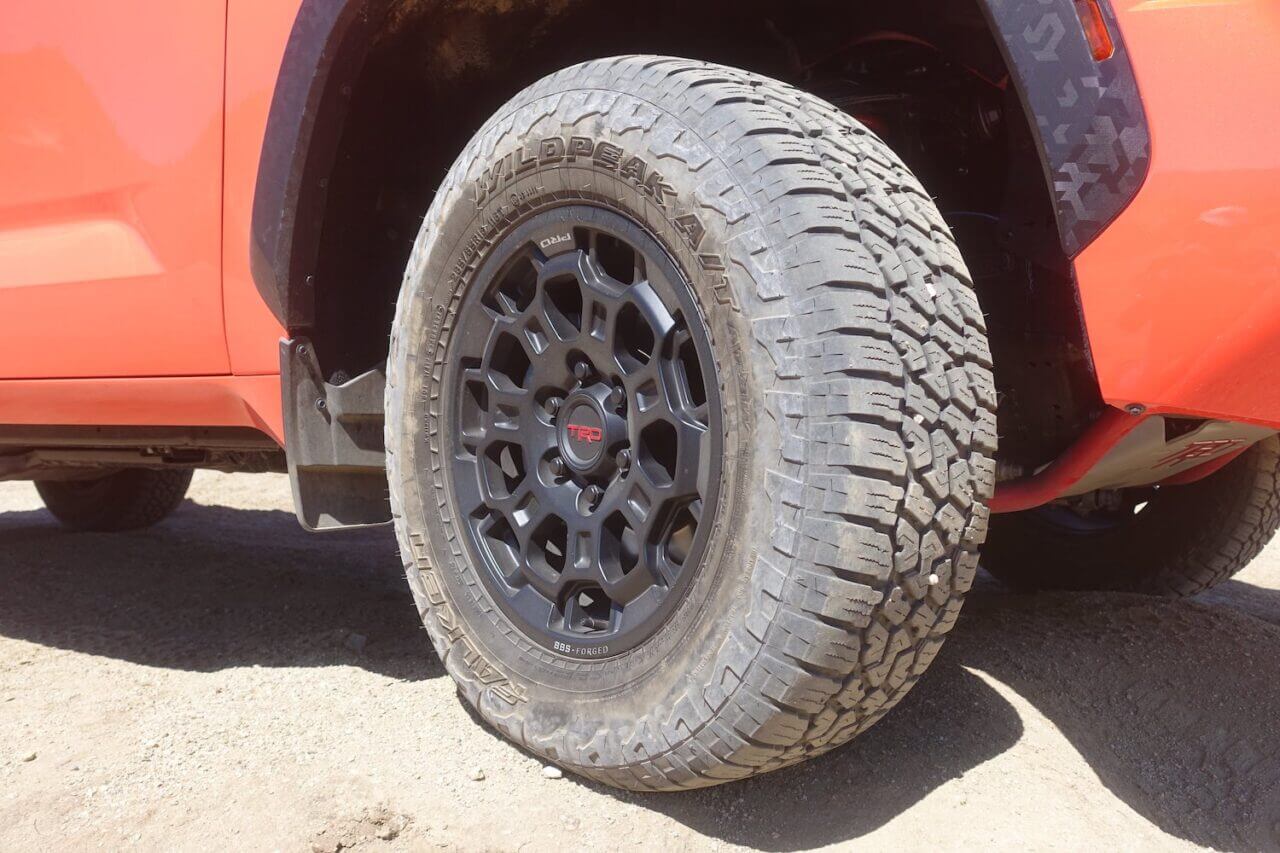
The Pro comes standard with 285/65R18 (33-inch) Falken Wildpeak all-terrain tires and create 11-inches of ground clearance under the front skid plate and 9-inches under the rear axle. Those tires, combined with the small frontend lift and unique fascia produces an approach angle of 26.2 and a departure angle of 24.2. For comparison, the new GMC Sierra AT4X has an approach angle of 25.5 degrees and a departure angle of 23 degrees. And a Ford F-150 Tremor has an approach angle of 27.6 degrees and a departure angle of 24.3 degrees. So clearly, the Toyota is in the hunt amongst its peers when it comes to trail clearance.
The TRD Pro hits the scales at 6,100 lbs., carry a 1,600 lb. payload and tow a rather impressive 11,175 lb. trailer. That’s a better towing capacity than any of the aforementioned off-road package full size trucks. And there’s more ability here than the last Tundra we tested. That 2015 Tundra TRD Pro, weighed 5,860 and was rated to tow an even 10,000 lbs. and handle 1,630 lbs in the bed.
On the Street
The V8 is gone but we stopped missing it after about ten minutes driving the new Tundra. This hybrid system is wickedly powerful and there’s torque everywhere. It’s really fun and really responsive too. Car and Driver tested a Pro and found it to scoot to 60 mph in just 5.7 seconds. That’s quicker than the old Tundra and on par with a 6.2-liter Chevy or GMC pickup. But the F-150 Tremor smokes them all and can complete the deed in 5.3 seconds.
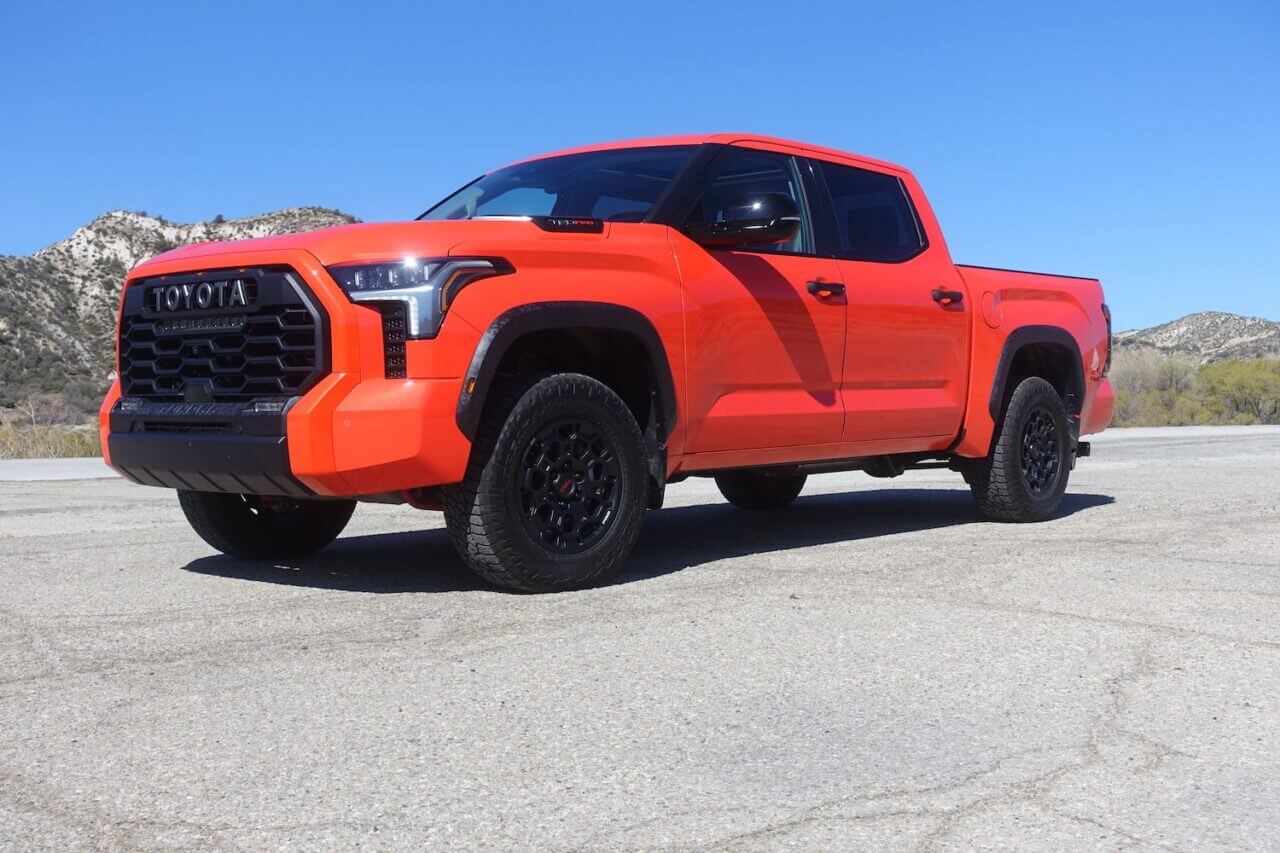
Sport and Sport Plus modes are the ones to be in if you’re looking for fun. And digging deep into the throttle delivers something new—a really impressive impersonation of a V8’s soundtrack. Yes, it’s fake noise pumped in through the audio system. But honestly, it sounds pretty cool.
On the highway and around town, the Tundra is reasonably smooth. The truck can maintain 70 mph in most conditions with the engine spinning at just 1,500 rpm. Introduce a hill, or shift into Sport mode, and the transmission drops a gear or two and revs rise to 2,000 rpm. But the torque is very impressive here. It feels like you could tow a serious trailer with this rig. Though the Pro is a hybrid, don’t expect fuel economy to take center stage. Though rated at 17 mpg city and 22 on the highway, on our test we saw no better than 14 mpg. Perhaps we spent a bit too much time digging into those power reserves.
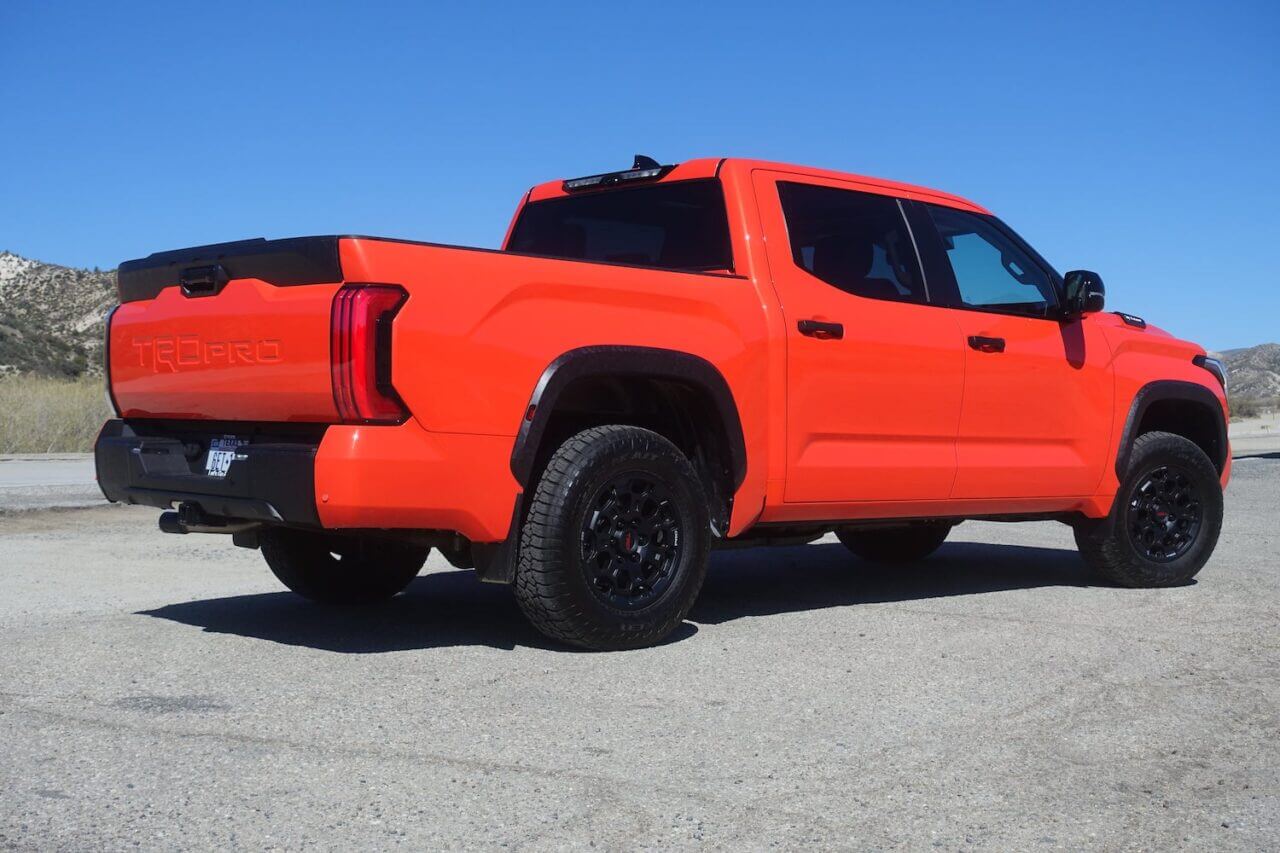
But it’s certainly not all bad inside. The seats are very comfortable and we liked the leather-wrapped shifter and steering wheel. The 4WD controls and drive mode selector switches are in the right spot too, right behind the gearshift. And we liked the giant 14-inch touchscreen—a massive improvement over the old system. The navigation system is cloud-based and can actually store maps in case you travel to an area outside the coverage area. Neat. All hybrid models (not just TRD Pros) gain a 12.3-inch digital gauge cluster with selectable screens. Overall it’s a fine, if somewhat strange interior compared to other full size trucks.
On the Trail
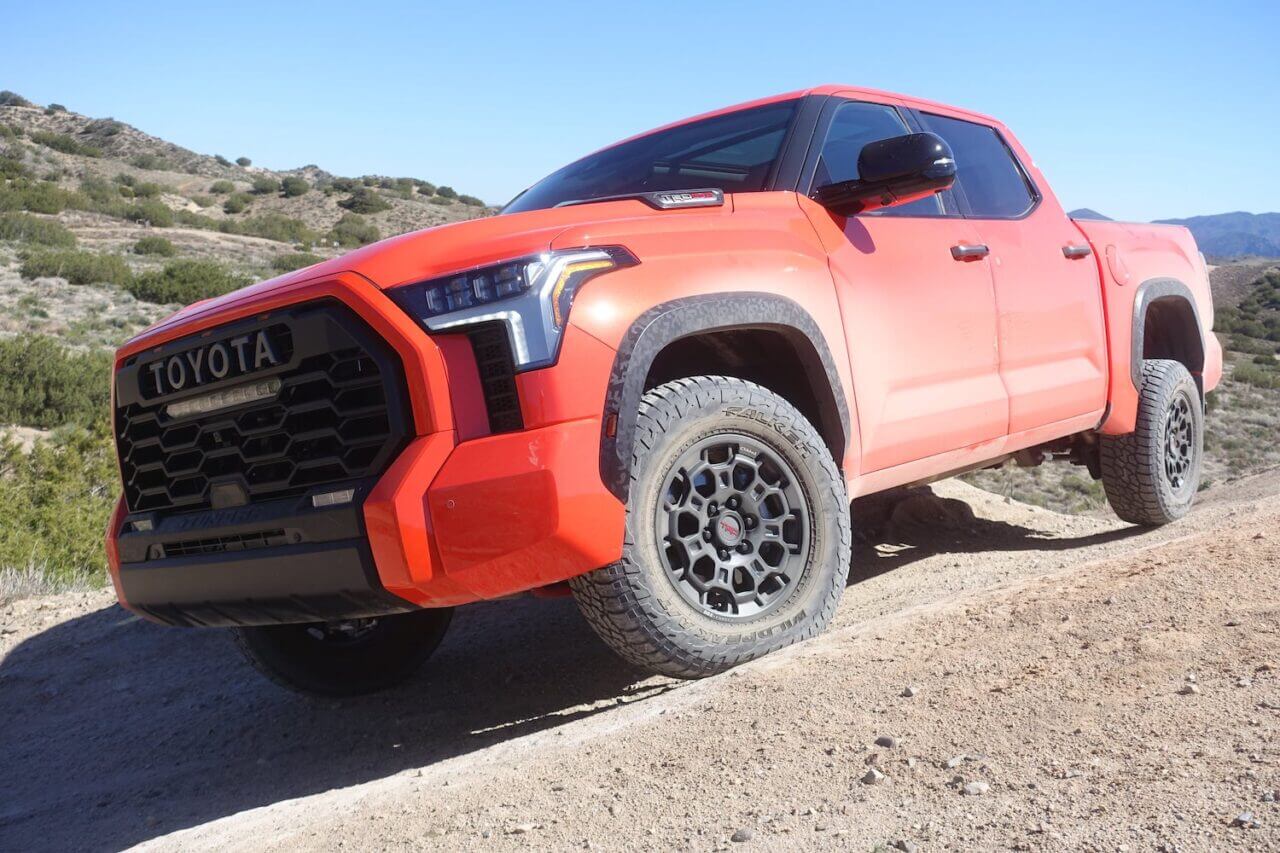
The TRD Pro comes packing quite an advanced drivetrain. And we were certainly skeptical of its performance in the dirt. After all, the old V8 the TRD Pro model was really a blast to drive in the sand and in the higher-speed bumps. How does this new one match up? Pretty well actually.
If you’re looking for a full size truck with an off-road package that offers lots of articulation, this is not that truck. On Four Wheeler’s ramp, a TRD Pro ramped just 436 while an F-150 Tremor scored way flexier 557. One reason is for the lack of suspension movement that is clearly visible up front—a massive TRD front sway bar. We’re not sure why an off-road package has a bar of that size, but it probably doesn’t help off-road. So without big reserves of suspension flex, having the rear locker on board really helps pick up the slack. And because of that, the Toyota did admirably well in slow-speed terrain.
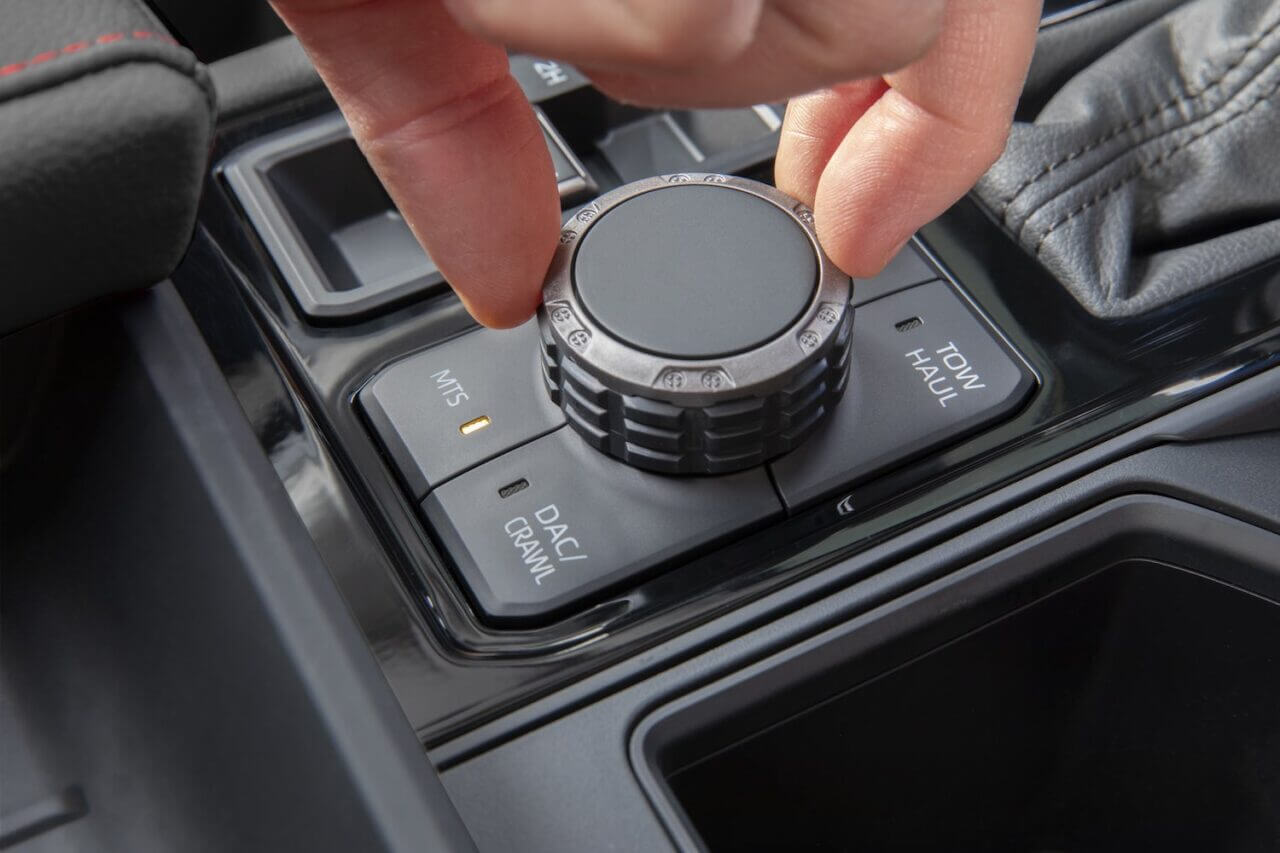
Select low range and you can choose from several Multi-Terrain Select (MTS) modes: Auto, Sand, Mud and Rock. In Rock mode with the rear axle locked, we found the TRD Pro to be quite tenacious. There’s more grip than one might think and there’s loads of torque right off idle from the hybrid system.
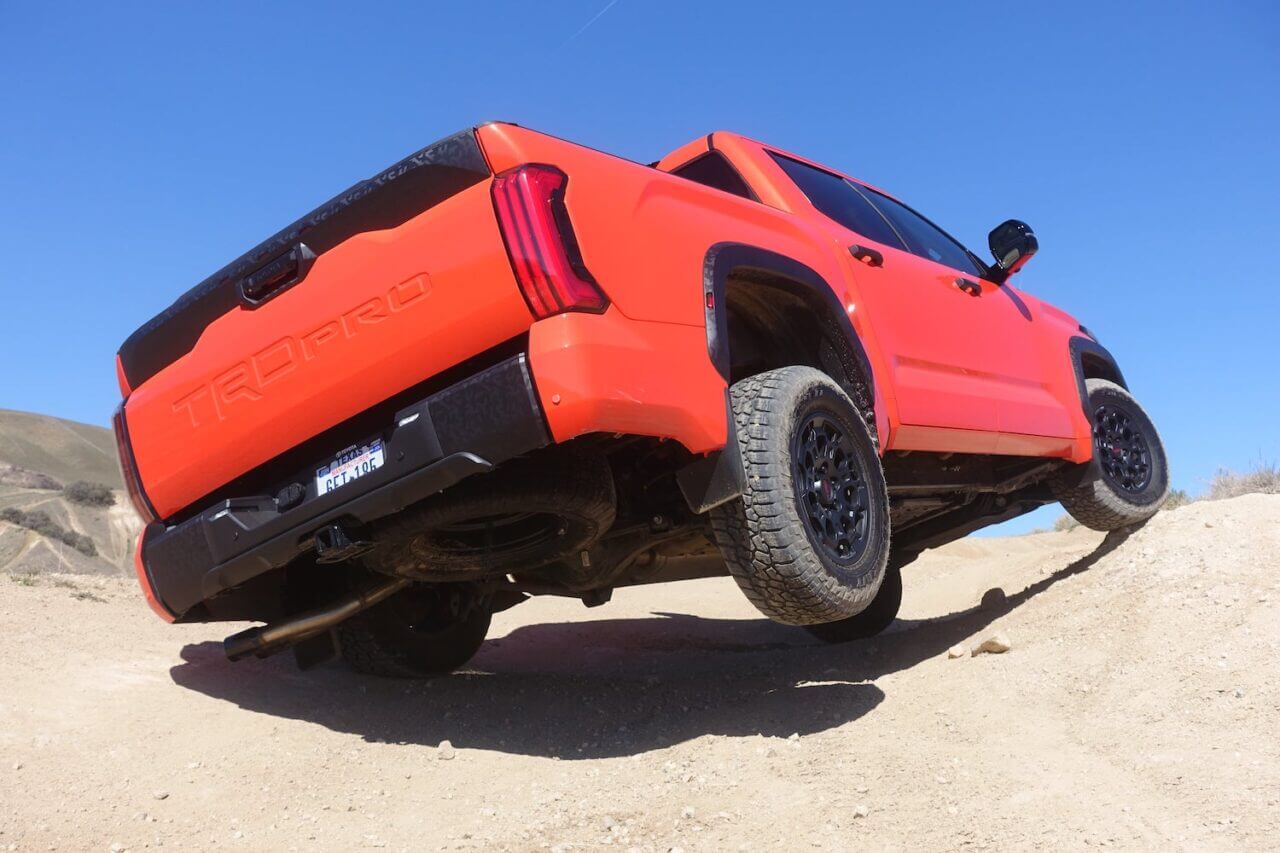
Because the truck has fairly good clearance all the way around the body, we had a degree of confidence to try some more difficult obstacles. That said, the Tundra has a massive hood and so outward visibility is rather poor. And that makes the Tundra tricky to place. This is one fullsize truck that feels big on the trail.
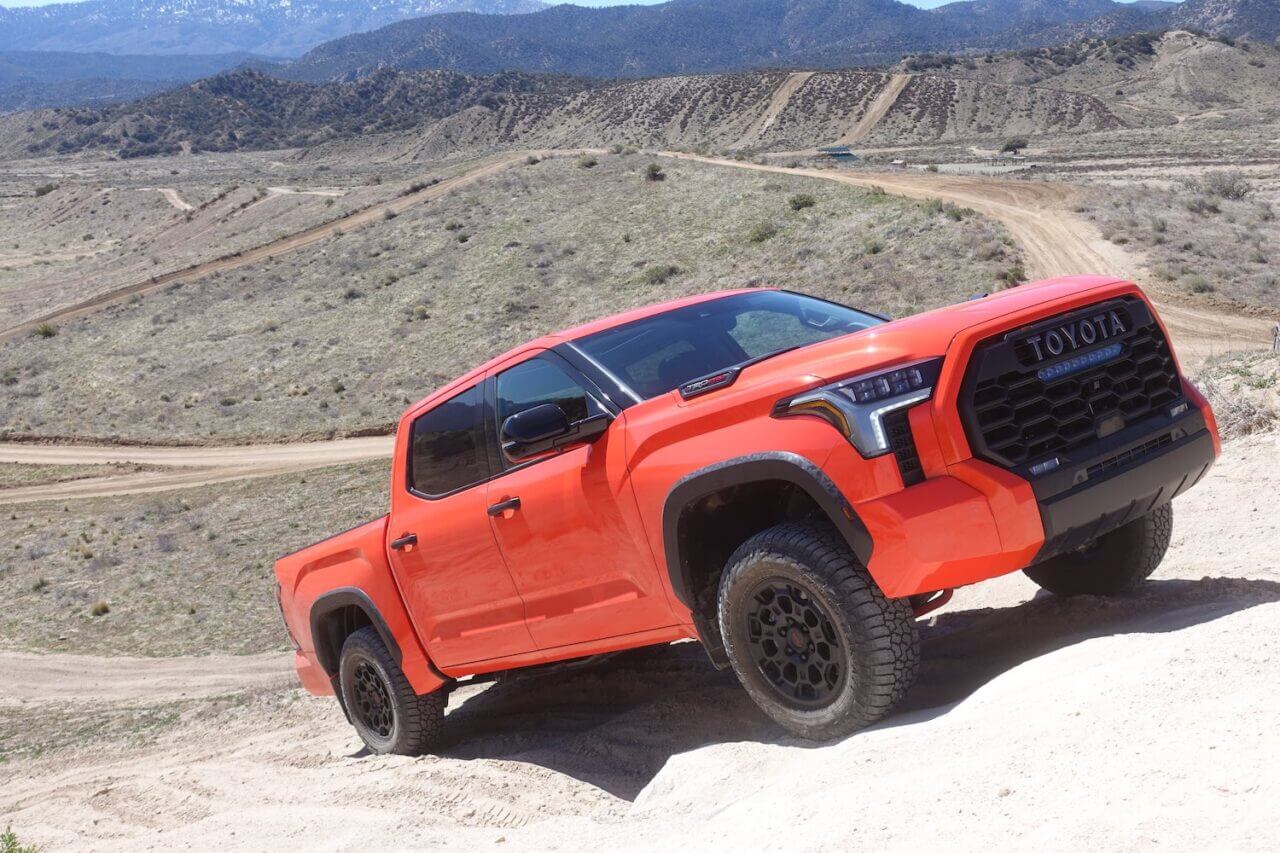
At our favorite hill climb, the Tundra was able to make it to the top with the rear axle locked in the MTS Auto mode. It was a fairly smooth and uneventful drive. We fed in a bit of throttle and maintained 10 mph sawing the steering wheel back and forth as the front tires would begin to momentarily lose grip. We then tried the hill driving as slowly as we could. With the MTS in Rock mode, we crawled the hill at around 4 mph and somehow never slipped a tire. The traction control calibration is excellent as is the grip from the Falkens.
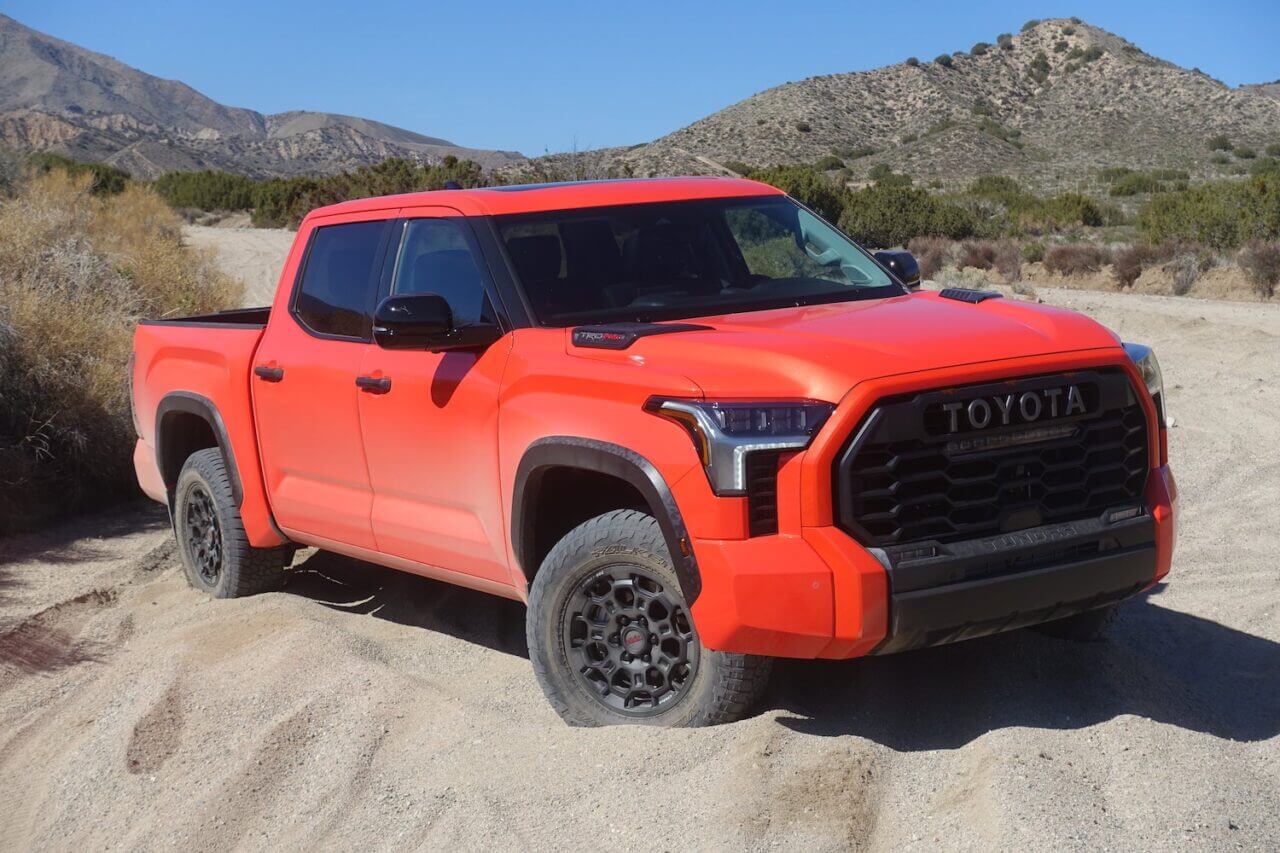
In the sand, we pressed the ESC button to turn off the stability control, engaged Sport mode and had a bit of fun in 2WD. It just wanted to play here, sending big roosts skyward and fishtailing the rear end as we drove up the wash. Next, we tried 4WD and Sand mode. It worked well putting down the power but lost a bit of that hooligan spirit. At moments, it felt like it was in a gear too tall and would bog a bit. Other times it accelerates more like it did in 2WD. We can’t explain what was going on. Perhaps it was the computers controlling the hybrid system getting a little funky? In any case, this truck could probably use a sort of Sport Sand mode—something more akin to Ford’s Baja mode.

On the higher speed fire road-style trails, the Tundra was a mixed bag. The truck feels very heavy when you pile on the speed. And at just over three tons, it’s a bit overweight for a light-duty pickup. Push the truck hard and the cab tends to quiver slightly, though less than some in the class. The ride is not magic carpet smooth over this terrain, but there’s enough damping in the Fox shocks to keep a fairly quick pace of 25-30 mph.
The Bottom Line
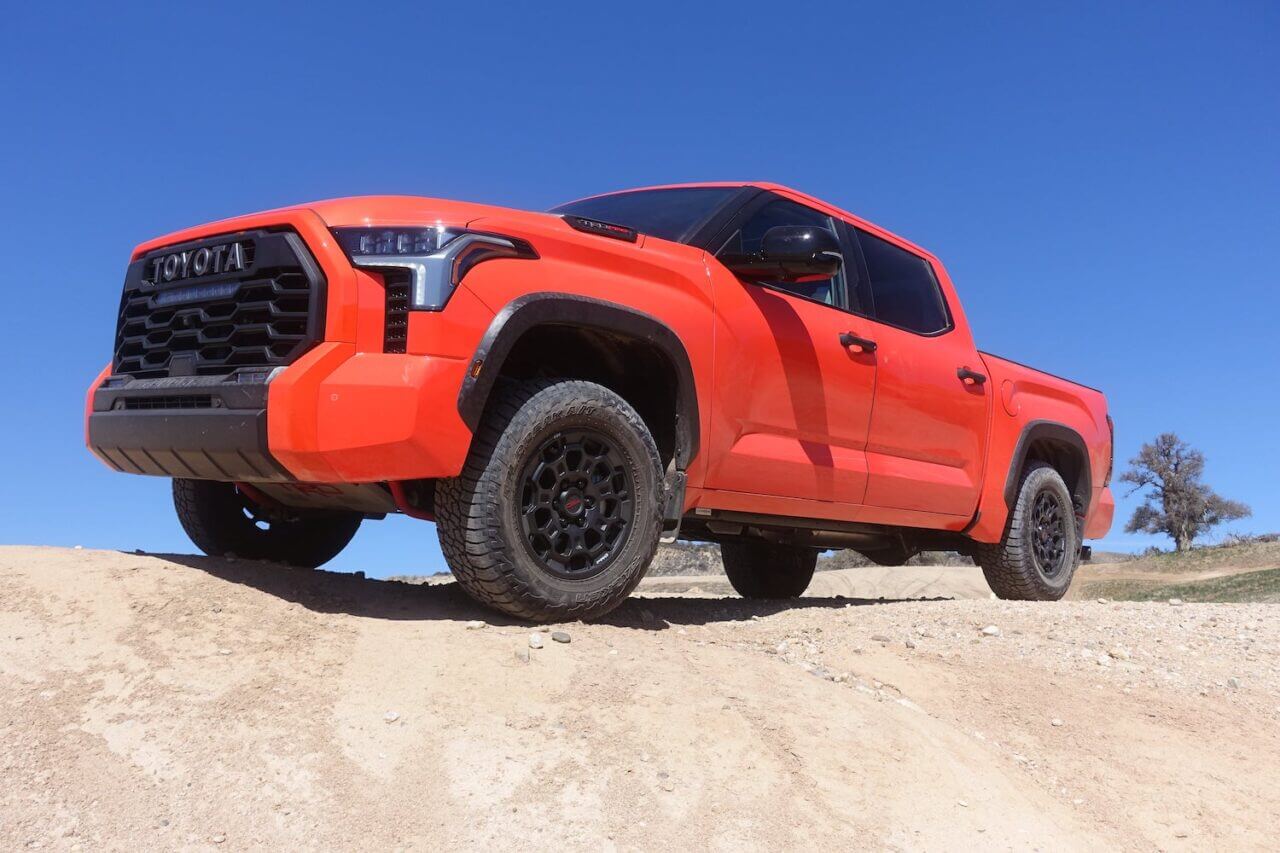
The all-new Tundra TRD Pro is a step forward in terms of technology and slow-speed off-road capability. Thanks to the hybrid powertrain, this beast is downright torquey. But overall, the Tundra left us wanting. It doesn’t really surpass its rivals on any level. It’s heavier than other light-duty trucks and even though there’s a hybrid system on-board, fuel economy is fairly dismal. The truck might say “Pro” but it doesn’t have the suspension articulation to match. And on the inside, the truck is a little too funky for our tastes. The aftermarket has already been hard at work developing parts for the new Tundra. No doubt, a few of these faults can be fixed with a some upgrades.



2